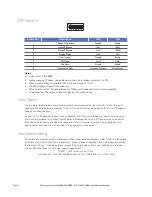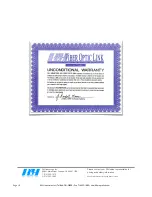
Guidelines for handling terminated fiber cable
•
Do not bend fiber cable sharply. Use gradual and smooth bends to avoid damaging glass fiber.
•
Keep dust caps on fiber optic connectors at all times when disconnected.
•
Do not remove dust caps from unused fiber.
•
Keep fiber ends and fiber connectors clean and free from dust, dirt and debris. Contamination will cause signal loss.
•
Do not touch fiber ends.
•
Store excess fiber on housing spools or fiber spools at site
Acronyms
Commonly used acronyms and abbreviations
Acronym/Abbreviation
Description
UTP
Unshielded Twisted Pair (commonly used in Ethernet networks)
TP
Twisted Pair (same as UTP)
FO
Fiber Optic
TX
Transmit
RX
Receive
PWR
Power
GRN
Green
ORG
Orange
Applications
Network equipment in high voltage areas can be at risk due to Ground Potential Rise (GPR). A copper
network cable referenced to a remote ground can become a path for high voltages during a ground fault.
Placement of all-dielectric fiber optic cable (instead of copper) completely eliminates the presence of a
remote ground, which dramatically increases safety of personnel and reliability of equipment. By utilizing
fiber optic cable, the 10/100/1000 Ethernet over fiber card provides absolute electrical isolation between
both ends of the network.
Copper twisted pair Ethernet is limited to 100m/328ft without extenders. Using fiber optic cable provides
long distance service (up to 120km/74mi.) without any additional equipment. Fiber is immune to EMI/RF
interference, ground loops, and high voltage surges from lightning or ground faults, and is ideal in
electrically noisy environments such as near large power sources, electrical motors, and radio
communications equipment.
RLH Industries, Inc. • Tel. 866-DO-FIBER • Fax 714 532-1885 • www.fiberopticlink.com
Page 3




























